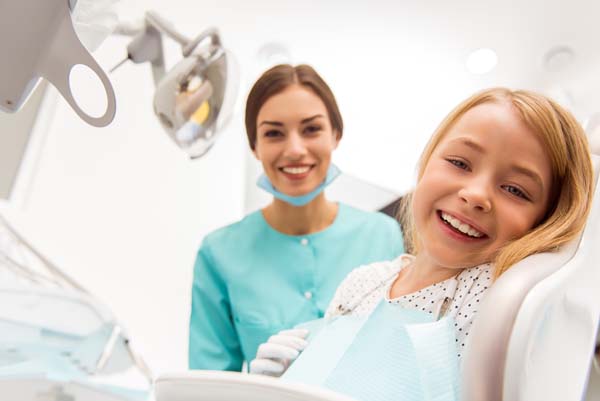How Does Teeth Bleaching Work?

Teeth bleaching can sound like a misleading or potentially risky term for those unfamiliar with how the procedure works. Dental patients may worry that teeth bleaching will damage their healthy teeth and decide to forgo any whitening treatments. On the other hand, it can be frustrating for these patients who maintain excellent oral hygiene and yet continue to have yellowed or stained teeth. This is an all-too-common situation, and it can be treated more easily than some may assume.
Teeth bleaching basics
There are a few different ways people can bleach their teeth, including store-bought whitening kits, take-home professional kits and in-office teeth bleaching appointments. Bleaching solutions are often much stronger when they are obtained from a dental office instead of a generic store-bought kit, but all whitening methods contain similar active ingredients. For instance, hydrogen peroxide and carbamide peroxide are two common bleaching agents often found in various teeth bleaching solutions.
Generally speaking, the longer the solution is left on the teeth, the whiter the teeth will become. Those who remove the bleaching agent within the recommended time-frame are unlikely to face any negative side effects, save for some temporary tooth sensitivity. Teeth bleaching is only risky if the person leaves the whitening product on for too long, or if the person had poor oral health at the time of the whitening.
Professional teeth bleaching
In-office teeth bleaching procedures can be fairly pricey, but it is a great choice for those who want the most dramatic transformations in the safest possible conditions. The dentist will begin by polishing the teeth to remove plaque, and then they will use gauze and other barriers to keep the bleaching solution away from the sensitive gum area.
Once the teeth are exposed, the dentist will coat them with the whitening solution. A light or laser might be used to activate the ingredients or speed up the process. Depending on the strength of the bleaching agent and the shade of the patient’s teeth, it may be left on for 30 to 60 minutes, after which the patient will rinse out their mouth. The dentist will apply fluoride to ease any tooth sensitivity, and then show the patient their enhanced smile.
Teeth bleaching kits
For a more affordable whitening solution, people can purchase professional kits from their dentist or choose over-the-counter whitening products. Professional take-home teeth bleaching kits have stronger solutions and have custom-fitted trays for each patient to ensure a comfortable fit. Store-bought whitening solutions may be ill-fitting or have insufficient amounts of bleaching agents to make a difference.
In any case, when using an at-home bleaching kit, people must take care to protect their lips and gums from the whitening product. The solution can irritate or burn the gums on some occasions, even when using weaker products.
How to learn if teeth bleaching is right for you
Before whitening your teeth, it is recommended that you speak with a dentist about your oral health first. Only a dentist can determine if your teeth are healthy enough to be bleached.
Request an appointment here: https://familychoicedentistry.com or call Family Choice Dental at (505) 634-5657 for an appointment in our Albuquerque office.
Check out what others are saying about our services on Yelp: Read our Yelp reviews.
Related Posts
Getting your wisdom teeth out can be a scary event. The thought of going through surgery may make you nervous or anxious. But in many cases, removing these third molars is the right decision for your health and smile. You do not have to go into this procedure blindly, however. As you learn more about…
team. We will work to develop a treatment plan that puts your smile goals within reach. Simply contact us today.Request an appointment or call Family Choice Dental at 505-634-5657 for an appointment in our Albuquerque office.
Are you considering a smile makeover? Read on to learn more. A smile makeover has both cosmetic and emotional value. The psychological effects extend to one’s self-esteem and self-image. According to the American Academy of Cosmetic Dentistry, nearly 99.7% of individuals consider a smile an important social asset. Smiles have a high social value, and…
It is common to remove wisdom teeth for cosmetic and health reasons. A dentist has the knowledge and training to perform this procedure and determine whether you are a good candidate. These teeth usually come in by the time you reach your early 20s. Usually, you will have four of these teeth — two on…
